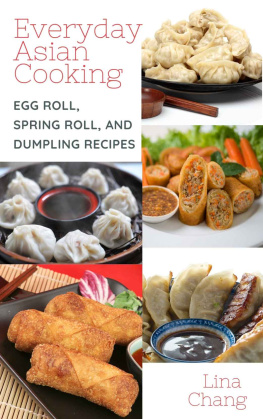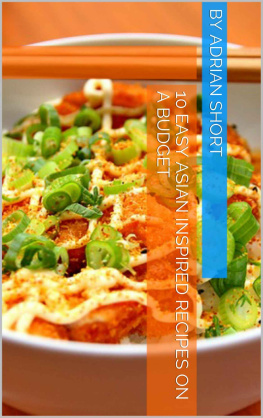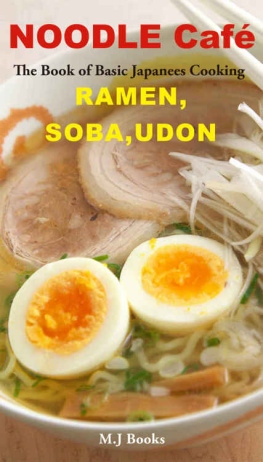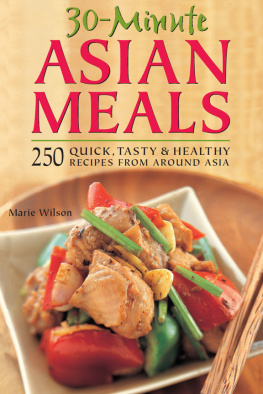Acknowledgments
Can you thank your parents enough? Not really. So, much love and gratitude to our parents Roberta and Martin Reinfeld and Deborah and Patrick Murray for all of the ways you have supported us throughout our lives. Thank you to all of our friends and family who helped make this book possible. Thanks to our agent, Marilyn Allen of Allen OShea Literary Agency. Thank you, Marilyn, for your support and vision.
Many thanks to our Da Capo editorsRene Sedliar, Collin Tracy, Alex Camlin, and Michelle S. Asakawa.
Tremendous thanks to all of our thorough recipe testers, tasters, and developers: Jessyka Murray, Elizabeth Warfield-Murray, Lisa Parker, Roland Barker, Gabriel Zingaro, Aaron Warfield-Murray, Gia Baiocchi, Roberta Reinfeld, Roger Vossler, Dawn Reinfeld, Bill Townsend, Ryan Hughes, Neil and Erica Greene, Laura Bishop, Jerrod Perry, Kelika Ranke, Natalie and Scott Kuroiwa, Aaron Mauck, and Ali Karasic. We could not have done this without all of you!
Love and gratitude to Sarah Warfield for taking the initiative and persevering with the food photography. Thanks also to Sarah Joy Davis for her invaluable assistance with the food styling and photography.
Thank you to all of the many chefs and culinary creatives out there who have contributed to our knowledge, inspiration, skills, and careers.
Appendix A:
Preparation Basics
In this section we go over some of the basic principles of vegan natural food preparation used in the recipes in the book.
Toasting Spices, Nuts, and Seeds
Toasting brings out a deeper flavor of ingredients. There are two methods we commonly use. One way is to use a dry saut pan. For this method, place the food in a pan, turn the heat to high, and cook until the item turns golden brown, stirring constantly. This method is good for spices, grains, and small quantities of nuts or seeds. Another method involves preheating an oven to 350F. Place the food on a dry baking sheet and leave in the oven until golden brown, stirring occasionally and being mindful to avoid burning. This method is best for nuts, seeds, and shredded coconut. Nuts become crunchier after cooling down. If you have more time, you can enhance the flavor even more by roasting at lower temperatures for longer periods of time. Nuts, for instance, roasted at 200F for 45 minutes have a richer, toastier flavor than roasting at a high temperature for shorter periods of time.
Working with Tofu
Tofu is sold in a number of varieties, including extra-firm, firm, soft, and silken. Each variety lends itself to a particular type of food preparation. The recipes describe which form of tofu is required for the dish.
The silken style may be blended and used to replace dairy products in puddings, frostings, dressings, creamy soups, and sauces.
The soft type may be used cubed in soups or pured in sauces, spreads, or dips.
The medium, firm, and extra-firm styles may be scrambled, grated in casseroles, or cubed in stir-fries.
The extra-firm style may be grilled or baked as cutlets, or it may be cubed and roasted or cubed and steamed along with vegetables.
Leftover tofu should be rinsed and covered with water in a glass container in the refrigerator. Changing water daily is recommended. Use within 4 days. Firm and extra-firm tofu may be frozen for up to 2 months. Frozen tofu that has been defrosted has a spongy texture that absorbs marinades more than tofu that has not been frozen.
To make tofu cutlets: Slice a 1-pound block of extra-firm tofu into thirds or fourths. If you wish, you can then cut these cutlets in half to yield six or eight cutlets per pound. You can also cut the tofu diagonally to create triangle-shaped cutlets. Cutlets can be marinated and then roasted or grilled.
To make tofu cubes: To make medium-size cubes, slice the tofu as you would for three or four cutlets. Then make four cuts along the length and three cuts along the width of the tofu. You can make the cubes larger or smaller by altering the number of cuts.
To grate tofu: Be sure to use medium, firm, or extra-firm tofu that has been drained well. Slide over the large grate on a standard cheese grater. Be careful with your fingers!
Marinating
Marinade ingredients significantly determine the flavors of a dish. The main rule of thumb is the longer an ingredient sits in the marinade, the more of its flavors it will acquire. Simply placing tofu or a portobello mushroom in different marinades creates dramatically different taste sensations. If possible, allow more time for marinating than the recipe calls for. Up to an hour (or even more) will yield a more flavorful dish.
There is vast room for creative experimentation when it comes to marinades. Some of our favorite marinade ingredients include soy sauce, toasted sesame oil, coconut or olive oil, brown rice vinegar, mirin, mustard, minced garlic or ginger, maple syrup, balsamic vinegar, and a variety of spices and herbs. You can also add sliced or chopped yellow or green onions.
Working with Tempeh
Tempeh needs to be thoroughly cooked before consuming. It is typically available in an 8-ounce package. Several varieties come in a thick square block. Others come as a thinner rectangle. Some cooks recommend steaming the tempeh for 10 minutes before using in dishes to remove any bitterness. Store leftover tempeh in a sealed glass container in the refrigerator for up to 3 days.
To make tempeh cutlets: You can slice the square block in half to create a thinner block and then cut it in half or into triangles. The longer block may also be sliced into thinner cutlets. These cutlets may then be cut into cubes.
Roasting Tofu and Tempeh
Tofu and tempeh cubes can be marinated, roasted, and then stored for a couple of days in a glass container in the refrigerator to be used in salads, stir-fries, or on their own as a snack.
To roast tofu and tempeh cutlets and cubes, follow these three simple steps:
1. Preheat the oven or toaster oven to 350F. Cut the tofu or tempeh into cutlets or cubes as mentioned above.
2. Place them in a marinade of your choosing. Allow them to sit for at least 5 minutes and up to overnight. If marinating overnight, store in an airtight container in the refrigerator.
3. Place on a well-oiled baking sheet or casserole dish. Roast until golden brown, approximately 20 minutes, stirring the cubes occasionally to ensure even cooking. If making cutlets, you can flip them after 10 minutes. Try a convection oven or use a broil setting for a crispier crust.
We prefer to use the toaster oven for small quantities of up to 1 pound of tofu or tempeh, which conveniently fits in our toaster ovens baking tray. Be aware that food tends to cook faster in a toaster oven than in a regular oven. Depending on the model, you can typically roast the tofu or tempeh in 15 minutes instead of 20.
Working with Seitan
Originating in ancient China, Seitan is sometimes referred to as meat of wheat. It is wheat gluten dough that has been cooked in a broth with different types of seasonings. Seitan can be used as an animal product replacement in virtually any dish. There are several brands available on the market. Experiment with them all to find your favorite. If you are ambitious and wish to make your own, go to www.about.com and enter making seitan, which gives step by step instructions. Check out page 118 for a quick way to spice-up store-bought seitan and create a chicken-style variety. A reminder note: seitan is pure wheat glutenits definitely not the dish for the gluten intolerant!












